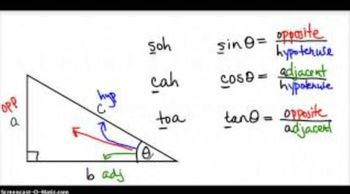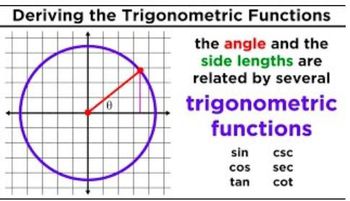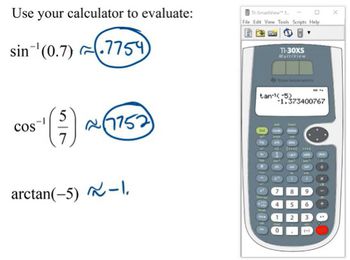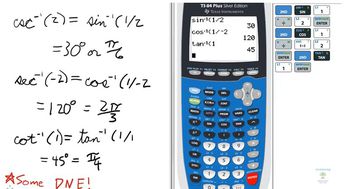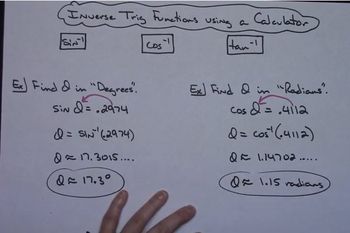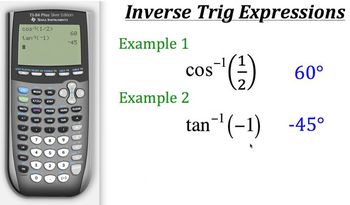Table of contents
- 0. Review of College Algebra4h 43m
- 1. Measuring Angles39m
- 2. Trigonometric Functions on Right Triangles2h 5m
- 3. Unit Circle1h 19m
- 4. Graphing Trigonometric Functions1h 19m
- 5. Inverse Trigonometric Functions and Basic Trigonometric Equations1h 41m
- 6. Trigonometric Identities and More Equations2h 34m
- 7. Non-Right Triangles1h 38m
- 8. Vectors2h 25m
- 9. Polar Equations2h 5m
- 10. Parametric Equations1h 6m
- 11. Graphing Complex Numbers1h 7m
2. Trigonometric Functions on Right Triangles
Trigonometric Functions on Right Triangles
Problem 16c
Textbook Question
Textbook QuestionIn Exercises 9–16, use the given triangles to evaluate each expression. If necessary, express the value without a square root in the denominator by rationalizing the denominator.

tan 𝜋/4 + csc 𝜋/6
 Verified Solution
Verified SolutionThis video solution was recommended by our tutors as helpful for the problem above
Video duration:
4mPlay a video:
Was this helpful?
Key Concepts
Here are the essential concepts you must grasp in order to answer the question correctly.
Trigonometric Functions
Trigonometric functions relate the angles of a triangle to the lengths of its sides. The primary functions include sine, cosine, and tangent, which are defined as ratios of the sides of a right triangle. For example, tangent (tan) is the ratio of the opposite side to the adjacent side. Understanding these functions is essential for evaluating expressions involving angles like π/4 and π/6.
Recommended video:

Introduction to Trigonometric Functions
Special Angles
Certain angles, such as 30°, 45°, and 60°, have known sine, cosine, and tangent values that are often used in trigonometry. For instance, tan(π/4) equals 1, and csc(π/6) equals 2. Familiarity with these special angles allows for quick evaluations of trigonometric expressions without needing a calculator.
Recommended video:

45-45-90 Triangles
Rationalizing the Denominator
Rationalizing the denominator is a technique used to eliminate square roots from the denominator of a fraction. This is done by multiplying the numerator and denominator by a suitable value that will result in a rational number in the denominator. This process is important in trigonometry to present answers in a standard form, making them easier to interpret and use in further calculations.
Recommended video:

Rationalizing Denominators

 6:4m
6:4mWatch next
Master Introduction to Trigonometric Functions with a bite sized video explanation from Nick Kaneko
Start learningRelated Videos
Related Practice






